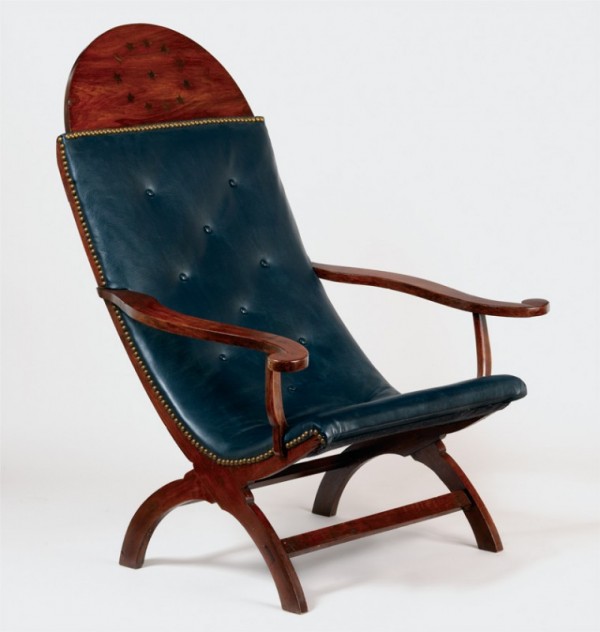
Campeche chair, probably New Orleans, Louisiana, ca. 1803–1810. Cherry, mahogany, and light wood inlay. H. 42 1/2", W. 28 1/4", D. 33". (Private collection; photo, Gavin Ashworth.)

Silver denarius of P. Cornelius P.f.L.n. Lentulus, Rome mint, ca. 74 b.c. Diam. (9/16". (Courtesy, Yale University Art Gallery, 2001.87.182. Numismatic Collection Transfer; photo, Alex Contreras.)
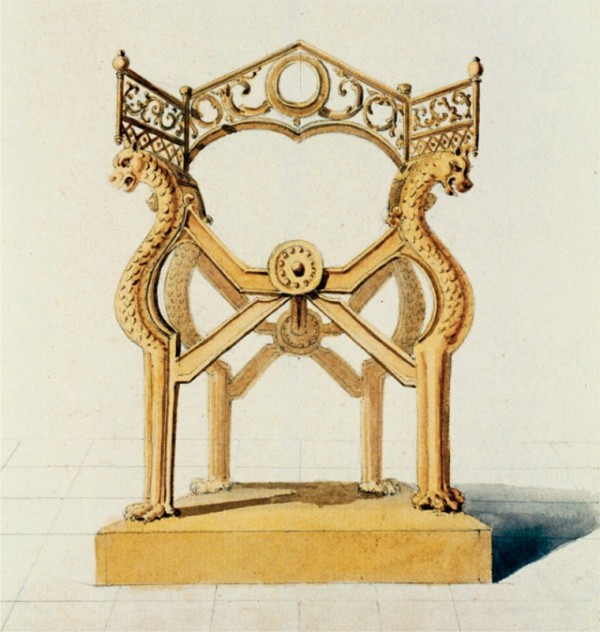
Trône de Dagobert à St Denis, France, 1750–1791. Ink and watercolor on paper. 7 3/4" x 6 7/8". (Courtesy, Bibliothèque nationale de France.) This depiction of Dagobert’s Throne was done when the object was still installed at St.-Denis, where Jefferson likely saw it in 1785. The actual throne is bronze with gilding and measures H. 53", W. 30 3/4". The cross-legged base with panther heads and monopod feet is the earliest feature of the chair, dating from the Merovingian period. The base has been reoriented, with the cross union now displayed in front. The back and armrests are later additions, likely from the Carolingian period.
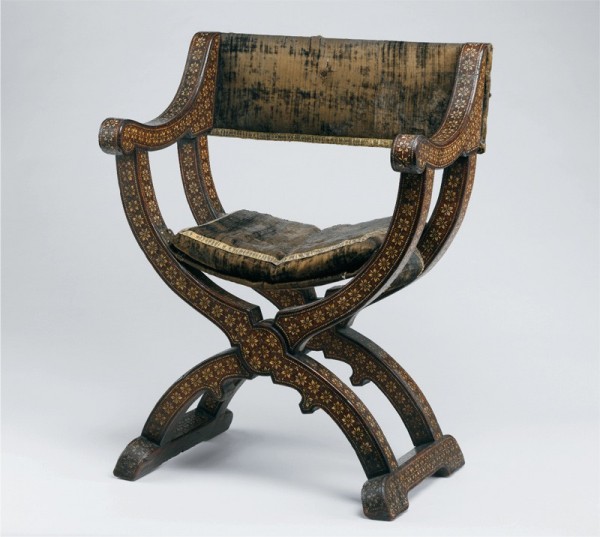
Folding chair (sillon de cadera), Granada, Spain, ca. 1500. Walnut, ivory, bone, mother-of-pearl, tin. H. 36 1/2" , W. 24", D. 19 1/2". (Courtesy, Metropolitan Museum of Art, Fletcher Fund, 1945; photo, Art Resource, NY.)

Campeche chair, probably New Orleans, Louisiana, 1810–1825. Mahogany with white oak and satinwood. H. 37", W. 26 3/4", D. 27 1/2". (Courtesy, Louisiana State University Museum of Art, gift of D. Benjamin Kleinpeter; photo, David Humphreys.) New Orleans Campeche chairs are often made of mahogany, but some are constructed of local woods, particularly walnut.
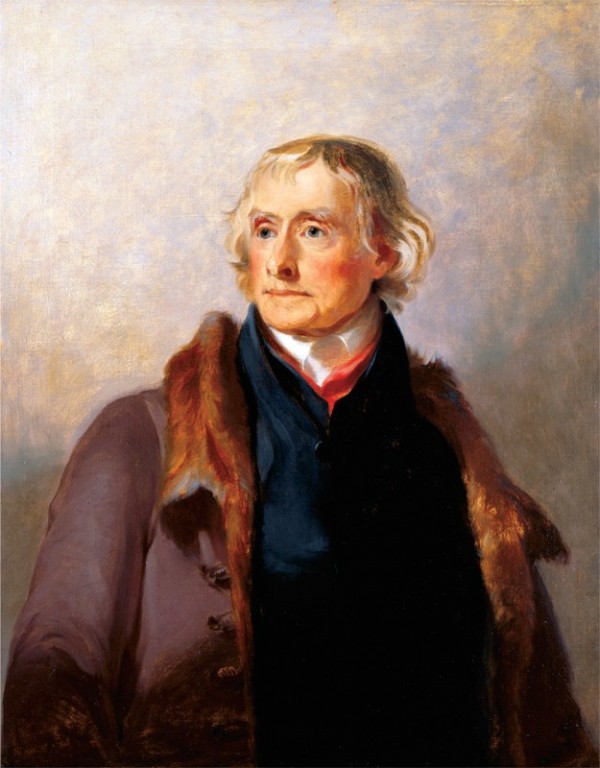
Thomas Sully, Thomas Jefferson, 1856. Oil on canvas. 34 1/2" x 27 1/2". (Courtesy, Thomas Jefferson Foundation, Monticello; photo, Edward Owen.) Sully made this copy after his earlier full-length life portrait of Jefferson done for the United States Military Academy at West Point in 1821.

Monticello, Charlottesville, Virginia. (Courtesy, Thomas Jefferson Foundation, Monticello; photo, Peter Hatch.) Jefferson may have sat in one of his Campeche chairs under this portico.
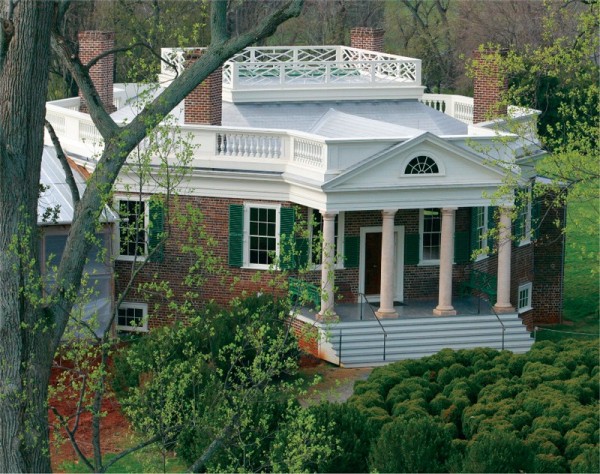
Poplar Forest, Lynchburg, Virginia. (Courtesy, Thomas Jefferson’s Poplar Forest; photo, Les Schofer.) Campeche chairs made up part of the furnishing plan at Jefferson’s retreat Poplar Forest.
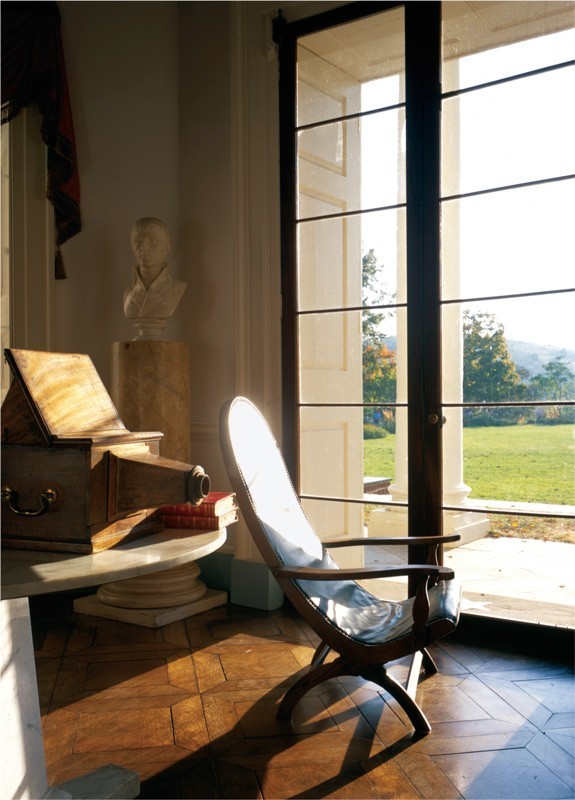
Parlor, Monticello, Charlottesville, Virginia. (Courtesy, Thomas Jefferson Foundation, Monticello; photo, Edward Owen.) Jefferson used two Campeche chairs in the parlor, one on either side of the door to the portico. One chair was next to a bust of Napoleon Bonaparte.
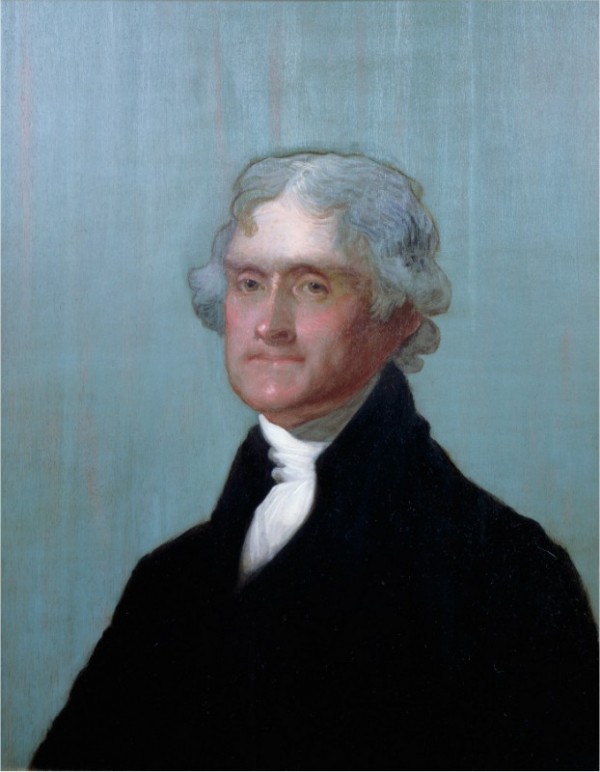
Gilbert Stuart, Thomas Jefferson, 1805. Oil on wood. 26 1/4" x 21 3/4". (Courtesy, National Portrait Gallery, Smithsonian Institution, and Thomas Jefferson Foundation; photo, H. Andrew Johnson.)

John L. Boqueta de Woiseri, A View of New Orleans Taken from the Plantation of Marigny, New Orleans, Louisiana, 1804. Aquatint on paper. 11 5/8" x 21 7/16". (Courtesy, The Historic New Orleans Collection, 1958.42. Museum/Research Center.)
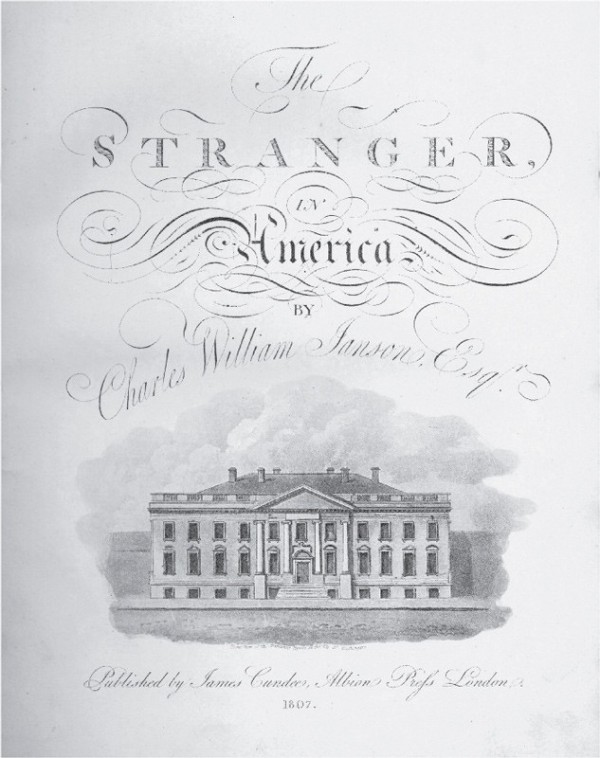
“The President’s House,” title page engraving. Chas. W. Janson, Stranger in America (London: J. Cundee, 1807). (Courtesy, Rare Book and Special Collections Division, Library of Congress.) This illustration shows how the house looked during Jefferson’s term.
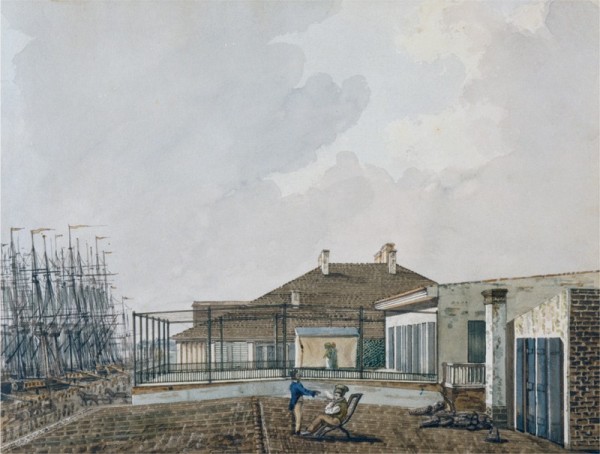
Benjamin Henry Latrobe, View from the Window of My Chamber at Tremoulet’s Hotel, New Orleans, 1819. Pencil, ink, and watercolor on paper. 9" x 11 7/16". (Courtesy, Maryland Historical Society.)
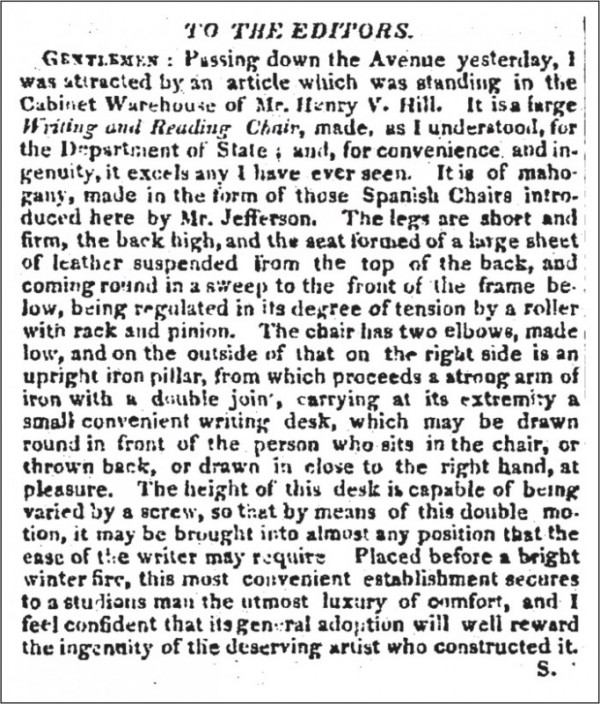
Editorial, Daily National Intelligencer, July 28, 1827. From 19th Century U.S. Newspapers. (Courtesy, Gale/Cengage Learning.)
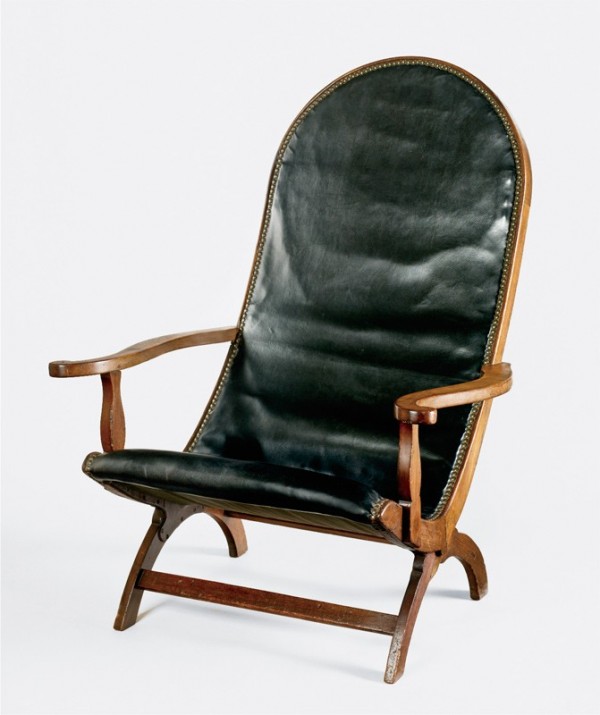
Campeche chair, probably New Orleans, Louisiana, 1815–1825. Mahogany and mahogany veneer. H. 41", W. 23 1/2", D. 41". (Courtesy, Thomas Jefferson Foundation, Monticello; photo, Gavin Ashworth.)
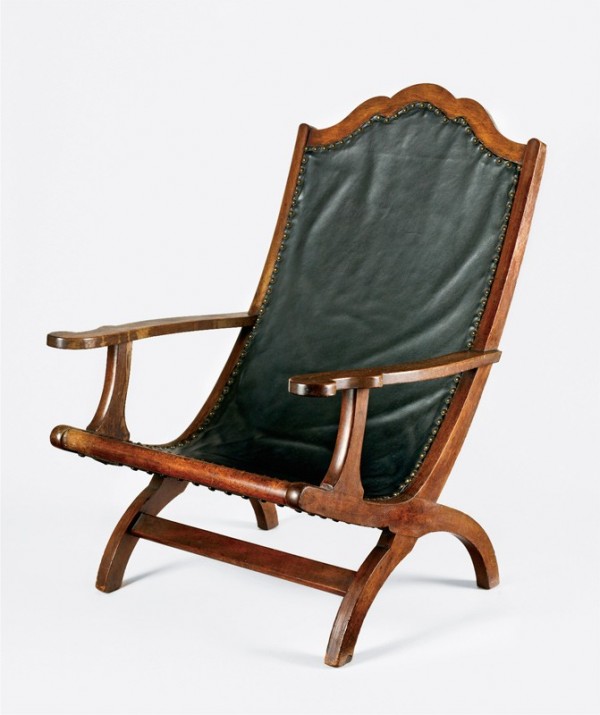
Campeche chair, probably New Orleans, Louisiana, 1815–1820. Mahogany. H. 39 7/16", W. 24", D. 33". (Courtesy, Thomas Jefferson Foundation, Monticello; photo, Gavin Ashworth.)
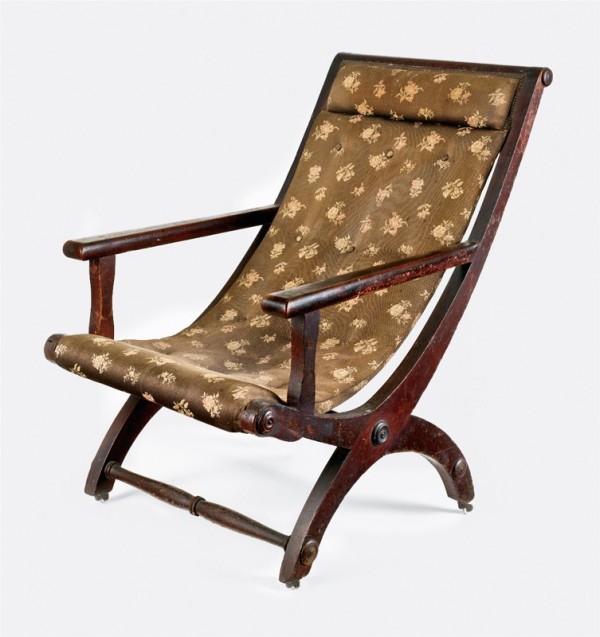
Campeche chair, probably Albemarle County, Virginia, 1815–1830. Cherry. H. 41", W. 23 1/2", D. 51 1/2". (Courtesy, Thomas Jefferson Foundation, Monticello; photo, Gavin Ashworth.)

“File of Unsettled Bills to Purchase Articles at the Sale at Monticello, January 1827”. (Courtesy, Albert and Shirley Small Special Collections Library, University of Virginia.)
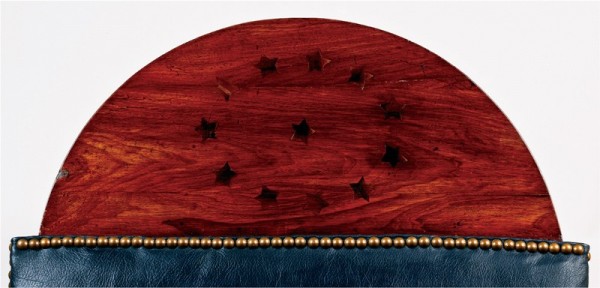
Detail of the star inlays on the crest of the Campeche chair illustrated in fig. 1. (Photo, Gavin Ashworth.)
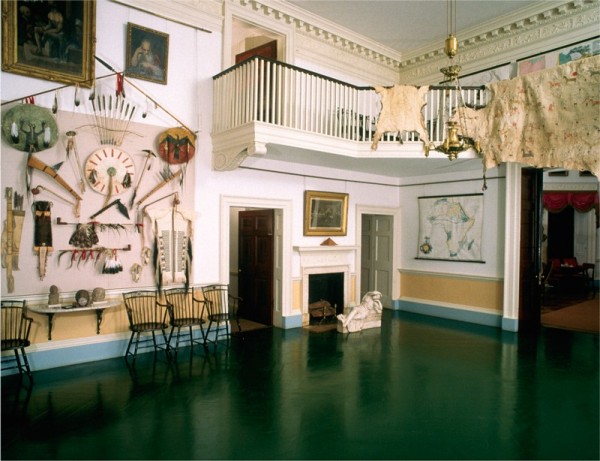
Southeast wall of the entrance hall at Monticello. (Courtesy, Thomas Jefferson Foundation, Monticello; photo, Charles Shoffner.)

Dining room at Monticello. (Courtesy, Thomas Jefferson Foundation, Monticello; photo, Philip Beaurline.) Jefferson kept a volume by Livy on the mantelpiece.
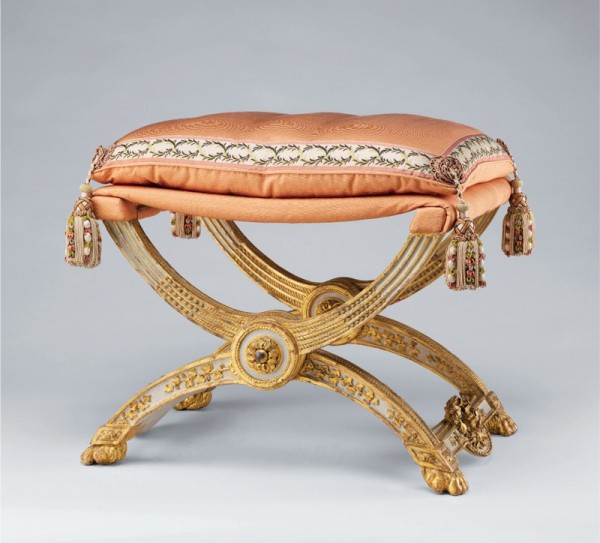
Jean-Baptiste-Claude Sené, folding stool, Paris, France, 1786. Beech. H. 18 1/4", W. 27", D. 20 1/4". (Courtesy, Metropolitan Museum of Art, gift of Mr. and Mrs. Charles Wrightsman; photo, Art Resource, NY.) This stool is from a set of sixty-four commissioned for the palaces of Fontainebleau and Compiègne in 1786. Examples from this set or similar stools may have been at the Hôtel du Garde-Meuble when Jefferson visited in September 1786.
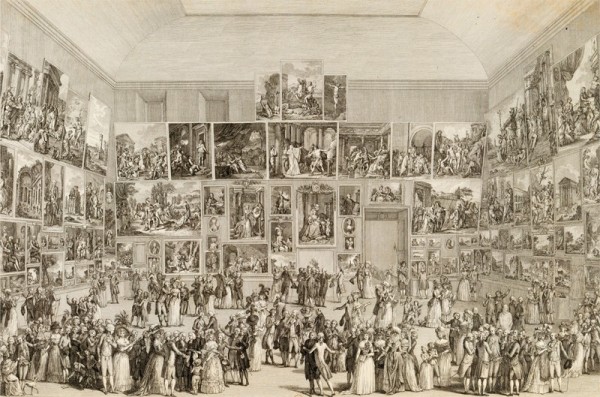
Pietro Antonio Martini, Exposition au Salon du Louvre en 1787. Engraving on paper. 12 3/4" x 19 1/4". (Courtesy, Bibliothèque nationale de France, Paris.)
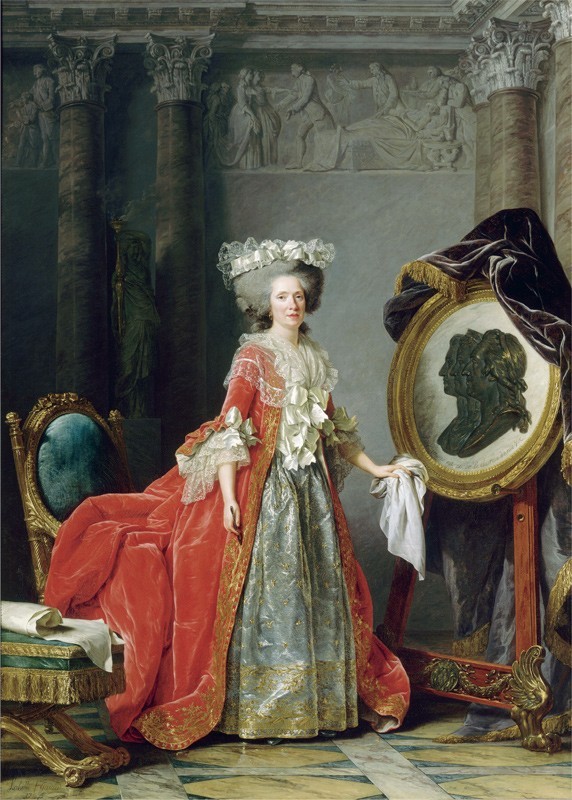
Adélaïde Labille-Guiard, Adélaïde of France, Daughter of Louis XV, Known as “Madame Adélaïde,” Paris, France, 1787. Oil on canvas. 106 3/4" x 76 1/4". (Courtesy, Châteaux de Versailles et de Trianon, Versailles; Réunion des Musées Nationaux /Art Resource, NY; photo, Gérard Blot / Jean Schormans.)
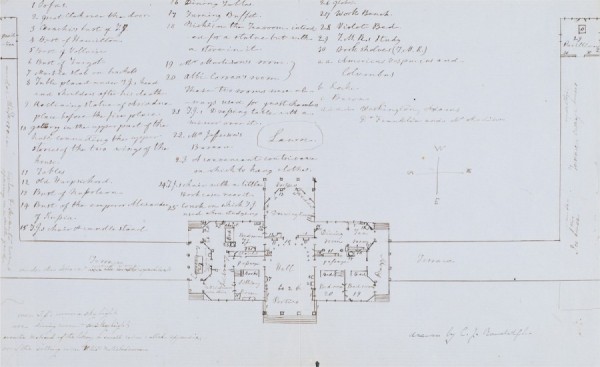
Plan of the first floor of Monticello Drawn by Cornelia J. Randolph, ca. 1826. Ink on paper. 8 1/4" x 13". (Courtesy, Albert and Shirley Small Special Collections Library, University of Virginia.) Cornelia Jefferson Randolph’s floor plan includes major works of art and large pieces of furniture on the first floor, but it does not mention movables like Campeche chairs.
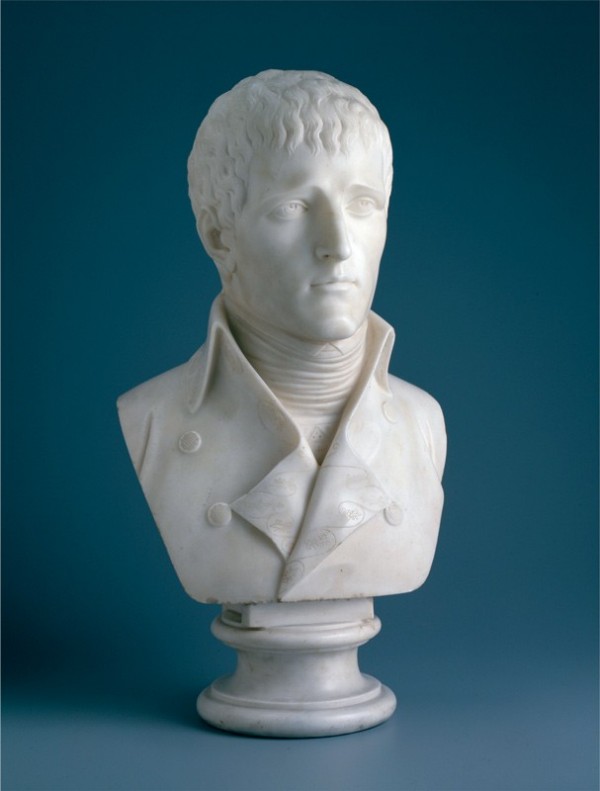
Bust of Napoleon Bonaparte after Antoine-Denis Chaudet, probably France, ca. 1807. Marble. H. 24 1/2", W. 13", D. 10". (Courtesy, Thomas Jefferson Foundation, Monticello; photo, Edward Owen.)
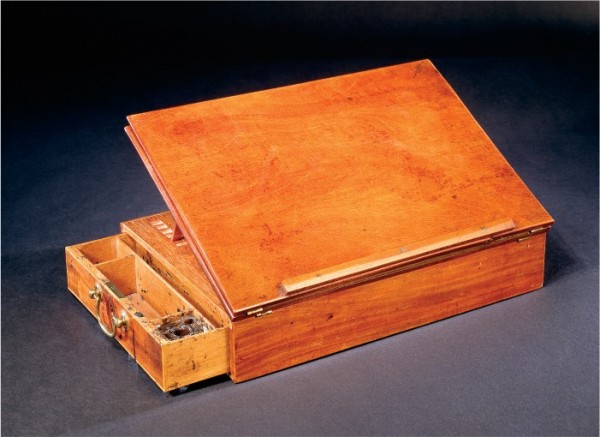
Lap desk attributed to Benjamin Randolph, Philadelphia, Pennsylvania, ca. 1776. Mahogany. H. 9 3/4", W. 14 3/8", D. 3 1/4". (Courtesy, Division of Political History, National Museum of American History, Smithsonian Institution.)
